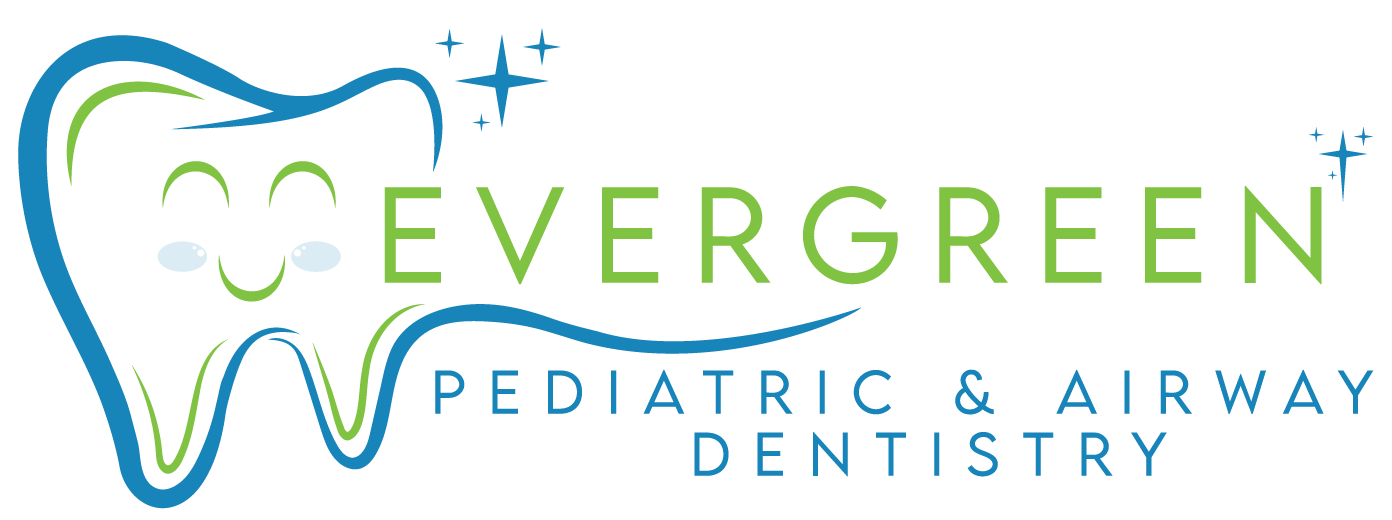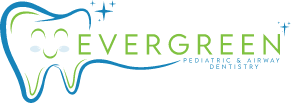Understanding Sealants: A Simple Solution to Prevent Cavities in Kids
Dental health is a crucial component of overall well-being, yet it often takes a backseat in discussions about children’s health. Parents and pediatricians alike face the challenge of ensuring that kids’ teeth remain cavity-free amidst the sea of sugary snacks and drinks. Cavities not only cause discomfort for children but can also lead to more severe dental issues if left untreated. This is where sealants come into play—a simple yet highly effective and a simple solution to prevent cavities in kids.
Sealants are an often overlooked but incredibly effective tool in the fight against cavities. They serve as a protective barrier, safeguarding vulnerable teeth from decay and the negative consequences that often follow. In this blog post, we’ll explore what sealants are, how they work, and why they’re so important for kids. We’ll also take a closer look at Evergreen Pediatric Dentistry’s unique approach, ensuring a positive experience for children and peace of mind for parents and pediatricians alike.
The Cavity Crisis: Why Children Are Primarily Affected
Cavities are a common ailment among children, often more so than conditions like asthma and hay fever. Studies show that by the time children reach elementary school age, over 50% have had cavities in their primary teeth. But why are kids so vulnerable?
The Prevalence of Cavities in Children
The high incidence of cavities in children can be attributed to a mix of biological and lifestyle factors. Young teeth are developing, and their enamel is not as hard as that of adults. This makes them more susceptible to decay. Additionally, children’s dietary habits, like frequent snacking and high sugar intake, contribute significantly to tooth decay.
Common Causes of Cavities in Kids
- Poor Dental Hygiene Habits: Children may not have established good brushing and flossing routines, leading to plaque buildup—a precursor to cavities.
- High Sugar and Acidic Diets: Sugary snacks and acidic beverages erode the enamel, creating an environment where cavities thrive.
- Lack of Fluoride Exposure: Fluoride strengthens teeth, but if children don’t get enough of it, their teeth are more prone to decay.
The Consequences of Untreated Cavities
Untreated cavities can lead to severe consequences for children, affecting not just dental health but overall well-being. Pain and discomfort are common, which can interfere with daily activities like eating and speaking. Infections may develop, leading to more serious health issues if left untreated. Furthermore, untreated cavities can affect a child’s self-esteem and confidence, making early intervention with tools like sealants critical.
How Sealants Can Help Prevent Cavities
Sealants act as a barrier, protecting the grooves and crevices of your child’s teeth from food particles and bacteria. By preventing cavities from forming, sealants save children from discomfort and help maintain their oral health.

Cavity Prevention in Kids
What are Sealants?
Definition and Purpose of Sealants
Dental sealants are a protective layer applied to the teeth’s surface, serving as a shield against cavities. They’re primarily used on molars and premolars, which are prone to decay due to their grooves and pits. These dental sealants are particularly beneficial for children, whose oral hygiene habits may not always be optimal.
How Sealants Work to Prevent Cavities
Sealants work by creating a smooth, easy-to-clean surface on the teeth. When applied, they fill in the grooves and fissures of the teeth, preventing food particles and bacteria from settling in and causing decay. This protective barrier is especially effective in the hard-to-reach areas at the back of the mouth, where brushing and flossing might not be as effective.
Different Types of Sealants Available
- Resin-Based Sealants: These sealants are made of plastic or composite materials and are the most commonly used type.
- Glass Ionomer Sealants: Made from glass powder, these sealants release fluoride to help prevent decay.
- Compomer Sealants: A hybrid between resin-based and glass ionomer sealants, they provide the benefits of both types.
- Preformed Sealants: These sealants come in pre-made trays and are applied to the teeth without the need for a curing light.
Key Benefits of Using Sealants for Cavity Prevention
Sealants offer numerous benefits for cavity prevention. Firstly, they’re highly effective, reducing the risk of decay by up to 80% in the first two years after application. Secondly, they’re quick and painless to apply, making them an ideal option for children. Finally, sealants can save time and money by reducing the need for more intensive dental treatments in the future.
What Are Sealants Made Of?
- Understanding the Materials: Sealants are crafted from materials like resin and glass ionomer, each selected for their unique protective qualities. Resin sealants are known for their durability, providing a robust protective layer over teeth surfaces. In contrast, glass ionomer sealants release fluoride, offering extra protection against decay. Both materials have been rigorously tested and are deemed safe and reliable for dental care.
- Comparing Types of Sealants: When choosing a sealant, it’s important to weigh the benefits of each type. Resin sealants are celebrated for their strength and longevity, making them a preferred choice for enduring protection. On the other hand, glass ionomer sealants, though less durable, have the added advantage of fluoride release, which aids in strengthening teeth over time. The decision often depends on individual needs and preferences, and consulting with a dental professional can help determine the best option for your child.
- Safety and Standards: The safety of sealant materials is paramount. They are subject to stringent regulatory standards to ensure they are suitable for use, particularly in children. Dental professionals follow guidelines established by organizations such as the FDA and ADA, ensuring that the sealants applied are not only effective but also safe for pediatric care.
Why are Sealants Important for Kids?
Explanation of the Vulnerability of Kids’ Teeth to Cavities
Children’s teeth are more vulnerable to cavities for several reasons. The enamel on baby teeth is thinner and softer than on adult teeth, making it easier for decay to set in. Additionally, kids may not have fully developed the skills needed for effective brushing and flossing, increasing their risk of cavities.
Benefits of Using Sealants for Kids
Dental sealants offer several benefits for children, here’s a summary:
- Prevention of Cavities: As discussed, sealants act as a barrier to protect teeth from decay.
- Pain Relief: Sealants can prevent cavities from forming, avoiding the discomfort and pain that often accompanies dental treatments.
- Improved Oral Health: By protecting the teeth from decay, sealants promote better overall oral health for children.
- Cost Savings: Investing in sealants for your child’s teeth now can save you money in the long run by reducing the need for more extensive and costly dental procedures.
In conclusion, sealants are an essential tool for cavity prevention in children. Their effectiveness, ease of application, and safety make them a valuable addition to any pediatric dental care routine.
How Sealants Can Improve Dental Health in the Long Run
Applying sealants early can have long-term benefits for a child’s dental health. By preventing cavities and maintaining strong, healthy teeth, sealants contribute to better oral health outcomes as children grow. This preventive measure can lead to fewer dental issues and a lifetime of healthy smiles.

Dental Sealants
When Should Kids Get Sealants?
Recommended Age for Getting Sealants
The ideal age for getting sealants is typically between 6 and 14 years when permanent molars and premolars first come in. Applying sealants soon after these teeth erupt can prevent them from developing cavities, setting the foundation for a lifetime of good oral health.
Factors to Consider Before Getting Sealants for Kids
Before getting sealants for your child, consider the following factors:
- Dental History: If your child has a history of cavities or is at high risk of developing them, sealants may be particularly beneficial.
- Cost: While sealants can save money in the long run, they do have an upfront cost that should be considered.
- Oral Hygiene Habits: Sealants work best when combined with good brushing and flossing habits. Ensure that your child understands how to maintain good oral hygiene before getting sealants applied.
Addressing Any Concerns Parents May Have
Parents may have concerns about the safety and effectiveness of sealants, but rest assured that they are a widely accepted and proven method for cavity prevention. Discussing these concerns with a pediatric dentist can help alleviate worries and provide reassurance about the benefits and safety of sealants.
The Sealant Application Process
Applying sealants is a straightforward, pain-free procedure that can be completed in one dental visit.
Step-by-Step Breakdown of How Dental Sealants Are Applied
- Examining the Tooth Surface: The dentist examines the teeth to ensure they are healthy and ready for sealants.
- Cleaning and Drying the Teeth: The teeth are thoroughly cleaned and dried to ensure the sealant adheres properly.
- Applying the Sealant and Curing Process: The sealant is painted onto the tooth surface and hardened using a special curing light.
Duration of the Procedure and Child Comfort Measures
The entire process usually takes only a few minutes per tooth and is completely painless. At Evergreen Pediatric Dentistry, we offer a kid-friendly environment to make the experience comfortable.
Evergreen Pediatric Dentistry’s Approach
Unique Approach to Making the Sealant Application Process Comfortable
At Evergreen Pediatric Dentistry, we prioritize your child’s comfort and ensure the sealant application process is as pleasant as possible. Our staff is trained to engage with children in a friendly manner, helping them feel relaxed and at ease during their visit.
Experienced Pediatric Dentists Trained in Using Sealants for Children
Our pediatric dentists are well-versed in applying sealants and are committed to providing excellent care tailored to each child’s needs. With extensive experience in pediatric dentistry, our team ensures your child receives top-notch treatment in a safe and nurturing environment.
Providing a Positive and Educational Experience for Kids at the Dentist
Beyond just applying sealants, Evergreen Pediatric Dentistry is dedicated to making dental visits educational for children. We teach kids about good oral hygiene habits, empowering them to take charge of their dental health and carry these lessons throughout their lives.

Professional Pediatric Dentist
Maintenance and Longevity of Sealants
Expected Lifespan of Sealants
Sealants typically last between 5 to 10 years, providing long-term protection against cavities. However, their lifespan can vary based on factors like oral hygiene practices and dietary habits. Regular dental check-ups are essential to monitor the condition of the sealants and ensure they continue to provide effective protection.
Signs That Sealants May Need Reapplication or Repair
Parents should watch out for signs that sealants may need reapplication or repair, including:
- Visible Chips or Wear: If the sealant becomes chipped or worn down, it may need to be reapplied.
- Bite Changes: Changes in how your child’s teeth fit together could indicate that the sealant needs to be checked and potentially repaired.
- Cavity Development: In rare cases, a cavity may develop under the sealant and require reapplication or additional treatment.
Importance of Regular Dental Check-Ups to Monitor Sealant Integrity
Routine dental check-ups are key to maintaining the effectiveness of sealants. Regular visits allow dentists to assess the integrity of the sealants and apply touch-ups or repairs as needed. Consistent monitoring ensures that your child’s teeth remain protected and healthy.
Conclusion
Sealants are a valuable preventive measure that can have long-term benefits for a child’s dental health. By applying sealants at an early age and maintaining good oral hygiene habits, parents can help their children develop strong, healthy teeth and avoid future dental issues. At Evergreen Pediatric Dentistry, we strive to make the sealant application process comfortable and educational for kids, ensuring a positive experience that promotes the best possible outcomes for your child’s dental health. Schedule an appointment with us today to learn more about how sealants can benefit your child’s smile! So why wait? Take action now to protect your child’s teeth and give them a lifetime of healthy smiles. Keep in mind that sealants are just one part of a comprehensive oral health plan, and regular dental check-ups and good oral hygiene habits are essential for maintaining optimal oral health. Together, we can help your child achieve a bright and healthy smile!
Evergreen Pediatric Dentistry
https://www.google.com/maps?cid=14720788683151219551
12910 Totem Lake Blvd NE #103, Kirkland, WA 98034, United States
(425) 814-3196
https://evergreenkidsdentist.com/


